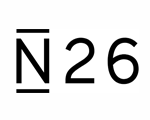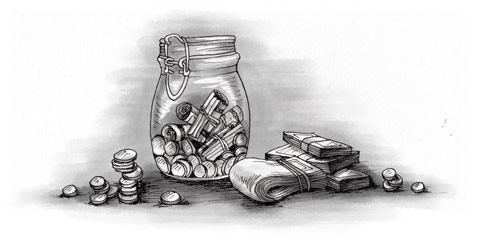As in other countries, co-operative banks were established to provide loans (particularly home loans) to their customers. Co-operative credit banks are rural and artisan savings banks funded and owned by farmers and craftsmen. They comprise the largest number of banks (over 500) in Italy, but because their average size is very small they account for just a tiny percentage of total deposits. The Banca d’Italia is owned by the public sector banks and is the only bank permitted to issues notes in Italy.
There are some 900 banks ( banche), around 200 of which are large ( grandi), including around 50 branches of foreign banks (mostly in Rome and Milan). The remaining 700 or so are primarily local banks with few branches. The number of banks in Italy is continually decreasing as banks merge or are taken over.
The Banca Nazionale del Lavoro, Cassa di Risparmio, Banca Commerciale Italiana, Banca di Roma, Banco di Napoli and Banco di Sicilia all have nationwide branch networks. The top ten banks hold some 35 per cent of total bank assets. Creditwest, a joint venture between Credito Italiano and the British National Westminster Bank, has around 30 branches in Rome, Milan and Naples. The post office serves as a savings bank for many Italians and foreign residents, although non-residents aren’t permitted to open a post office account.
Opening hours
Bank opening hours vary according to the bank and town, and are generally from 8 or 8.30am until 1 or 1.30pm and for one to one and a half hours in the afternoon, e.g. from 2.30 or 3pm until 4 or 4.30pm, Mondays to Fridays. Some branches in major cities also open from 9am to noon on Saturdays. On the day before a public holiday, banks usually open only in the morning. Offices at major airports and railway stations have longer opening hours for changing money and cashing travellers’ cheques, and there are also exchange bureaux in major cities and resorts with extended opening hours.
Charges
Italian banks have traditionally levied some of the highest charges in the world, although they’ve been reduced in recent years. The interest rates charged by many Italian banks are still exorbitant, particularly for business and consumer loans. The interest rates levied on credit cards are also excessive. However, lenders are now required to publish the highest rates they charge and the market average, so that borrowers can make comparisons. Shop around and compare rates before signing any contracts or taking out a loan (banks must also publish their conditions).
Italy has traditionally had one of the least efficient and most ponderous banking services in Europe, where even the simplest operation was inordinately complicated and time-consuming. However, banking has become highly automated in recent years, although Italian banks still lag behind those in many other European countries in terms of efficiency, customer service, and the range and quality of services provided.
On the other hand, Italians banks are quite safe and most deposits are covered by a Bank Deposit Insurance Fund ( Fondo Interbancario di Tutela dei Depositi). Branches of EU banks operating in Italy can join an Italian deposit guarantee plan and increase the amount of financial protection they offer clients above and beyond the protection provided by their home country’s guarantee plan. If a bank from a non-EU country is licensed to operate in Italy, the Italian branch must be part of the Italian deposit guarantee plan unless they’re members of an equivalent foreign plan. The maximum amount reimbursed to each depositor is limited to the very precise figure of €103,291.38.
This article is an extract from Living and Working in Italy from Survival Books.



